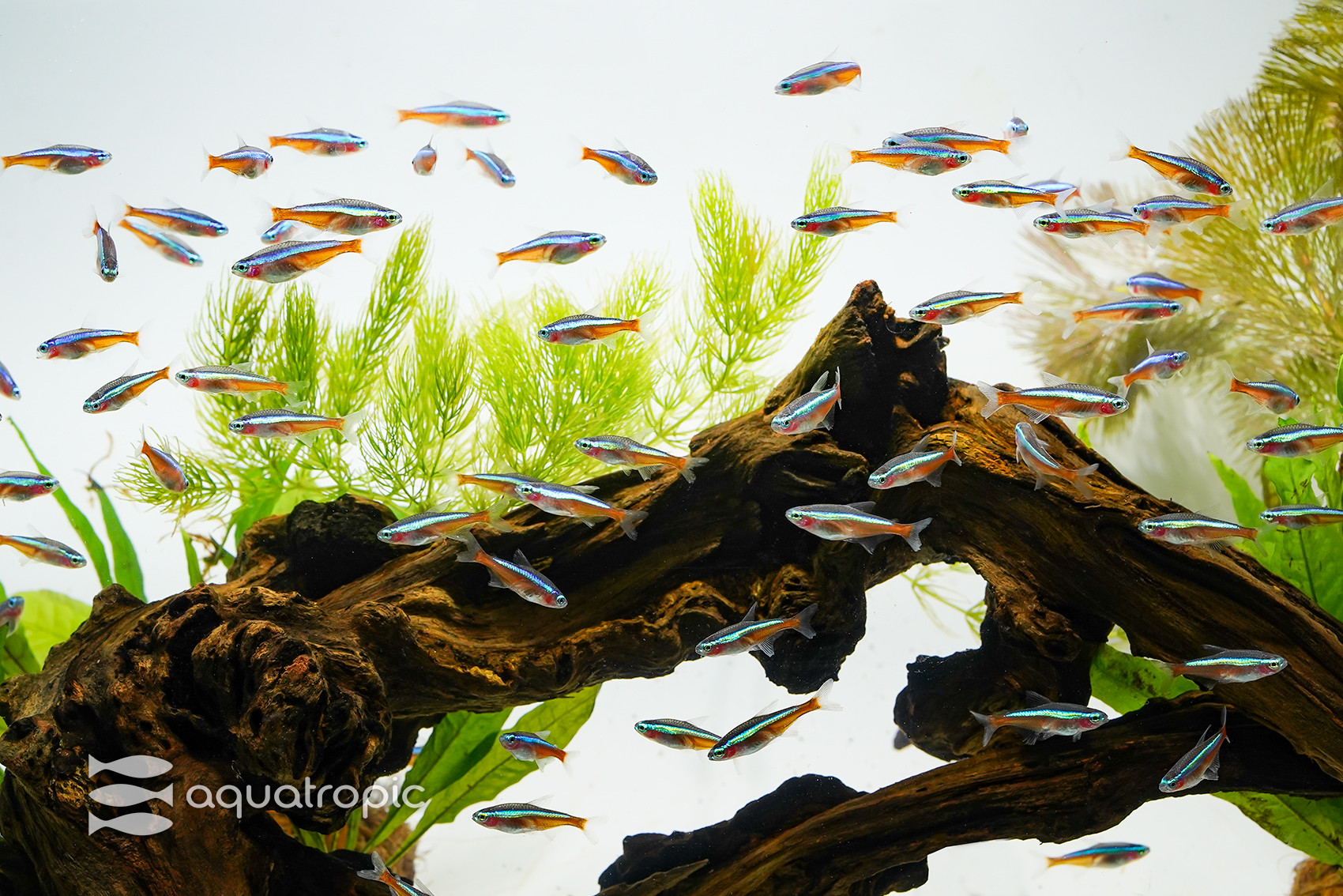The Paraacheirodon axelrodi

The Cardinal Tetra, or Paraacheirodon axelrodi, a relatively small but striking member of the tetra family, grows to a max length of around 2 inches (3cm). These brightly colored schooling fish are often confused with their smaller similarly colored cousin, the Neon Tetra or Paracheirodon innesi. However, unlike the Neon Tetra, the Cardinal Tetra’s bright blue iridescent stripe runs from the nares (nose) to the peduncle (where the caudal or tail fin attaches to the body), laterally bisecting the silver dorsal portion from the robust red ventral section that spans the full length of the fish.
Paraacheirodon axelrodi can be found throughout the tannic slow-moving waters and sandy streams of the Rio Negro and Orinoco tributaries. Cardinal Tetras require stable parameters and do best in acidic water but can tolerate a pH range of 3.5 - 7.5, KH between 1-6, and temperatures of 72 – 84 °F (23 – 29 °C). They do not require black water to thrive; however, tannins will increase their radiancy, shimmering color, and promote the most natural behavior and displays. P. axelrodi prefer dense vegetation and lots of structure such as branches and leaves. These will offer your fish plenty of hiding places to feel safe and secure, but it is also important to ensure there is open schooling areas for these fish to swim freely.
Cardinal Tetras can be kept in groups as small as 3 to 5, but for optimum health and spectacular displays of color and behavior, groups of 10 or more are strongly advised. While this species spends much of its life in slow moving rivers and streams, they will utilize higher current areas before returning to rest in calmer water. Cardinals can be timid, but larger numbers and more hiding areas will help them to feel safe enough to show off their true colors. Tankmates include many species of similar sized schooling fish, small to medium catfish, dwarf gouramis, or other small-mouthed fish. As Cardinal Tetras often make for a nice snack for larger mouth fish and other piscivores, it is important to confirm potential tankmates do not eat small slender body fish.

Being omnivores, the Cardinal Tetra will readily take fish, shrimp, or algae flakes and small pellet foods. They will also benefit from frozen or live Daphnia, Baby Mysis, Brine Shrimp, Moina, or prepared gel foods as a supplement or main diet. Using a vitamin supplement together with alternating foods will help keep your Cardinal Tetras healthy and bright and support their immune defense against infections.
Happy and healthy tetras can be bred with great attention to water parameters and diet. Breeding Paracheirodon can be tricky, and breeding is best done in a species only tank. This will allow them to lay hundreds of eggs in an evening, producing delicate wriggling fry with yolk sacs attached in about 24 hours.